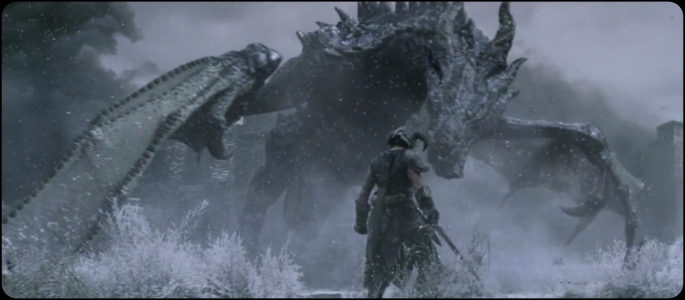Millions of people across the world are celebrating Chinese New Year, with today marking the first day in ‘The Year of the Dragon’. To mark the new year, we take a look back at the mythology of dragons throughout history, and their role on storytelling in games.
It’s unknown when dragons first appeared in myths and legends, but historians can trace stories as far back as 4000 B.C, where tales could have possibly started from the discovery of dinosaur fossils on the land, and sightings of whales in the sea. Western dragons also seem to show artistic influence form snakes and lizards, with the Old English for dragon being wyrm, meaning snake or serpent.
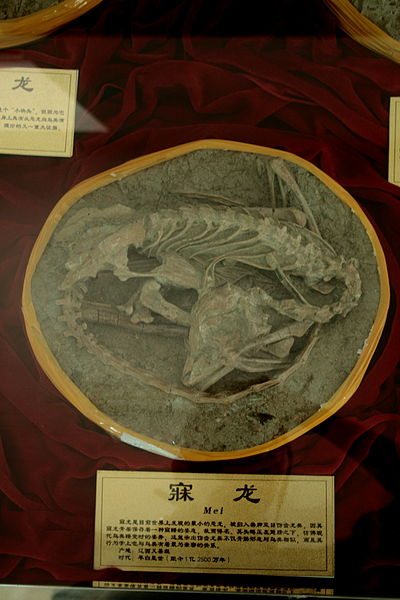 In Asia, a fifth millennium B.C. dragon statue has been discovered, the earliest recorded proof of Chinese dragons. Unlike eviler western dragons, Chinese dragons are seen as symbols of power, strength, wealth and good luck, although Buddhists introduced some destructive dragons. Thought to have been inspired by fossils of animals like the bird-like dinosaur the Mei Long (pictured) – which means sleeping dragon – Chinese dragons are generally more serpentine and longer than their western counterparts. Most don’t even have wings as they have a mystical ability to fly, rather than needing physical wings.
In Asia, a fifth millennium B.C. dragon statue has been discovered, the earliest recorded proof of Chinese dragons. Unlike eviler western dragons, Chinese dragons are seen as symbols of power, strength, wealth and good luck, although Buddhists introduced some destructive dragons. Thought to have been inspired by fossils of animals like the bird-like dinosaur the Mei Long (pictured) – which means sleeping dragon – Chinese dragons are generally more serpentine and longer than their western counterparts. Most don’t even have wings as they have a mystical ability to fly, rather than needing physical wings.
Chinese dragons have control over the weather, with the creatures believed to be the rulers of moving bodies of water, such as waterfalls, rivers, or seas. This means that dragons can show themselves as water spouts. Some Chinese villages built temples dedicated to the region’s Dragon King (one in the East China Sea, one in the South China Sea, one in the West Sea and one in the North Sea), and would offer sacrifices in times of flooding or drought.
The earliest legendary Emperors, Yandi and Huangdi were said to be related to the Chinese Dragon, with Yandi born by his mother’s telepathy with a mythic dragon. As the Chinese are seen to be the descendants of Yandi and Huangdi, they can refer to themselves as “the descendants of the dragon”.
In popular culture, Chinese Dragons have made numerous appearances in Asian books, TV shows, anime and films. In the classical story Journey to the West (one of the Four Great Classical Novels of Chinese literature) – which is often know as Monkey – the son of the Dragon King of the West was forced to serve as a horse for travelers because of his actions at a party in the heavenly court. 2010 third person platformer Enslaved: Odyssey to the West was a futuristic take on Journey to the West.
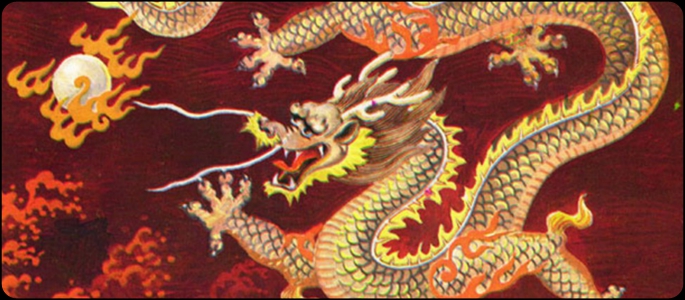
Western, ‘European Dragons’ have primarily been shown as evil, treacherous and hoarders of gold.
Greek mythology dating as far back as eight century B.C. cites dragons and dragon-like creatures. For example, Ladon was a serpent-like dragon that was twisted around the tree in the Garden of the Hesperides and guarded the golden apples, the Hydra was the serpentine creature that, if beheaded, would grow two heads, and the Colchian Dragon, a huge serpent, guarded the golden fleece.
Roman dragons borrowed from Greek and Near East ones, and still looked very snake-like. John’s Book of Revelation, thought to be dated 69 or early 70 AD, describes Satan as “a great dragon, flaming red, with seven heads and ten horns”.
Norse and Germanic mythology was particularly dragon-obsessed, with numerous dragons permeating their mythology, such as Níðhöggr gnawing at the roots of Yggdrasil, the World tree. One of the earliest and most famous stories about dragons is the often-adapted Beowulf, which has been dated to between the 8th and the early 11th centuries. J.R.R Tolkien, best known for the incredible The Lord of The Rings trilogy, believed that Beowulf dates to no more than several generations after A.D. 700. Tolkien said about dragons in Norse mythology:
And dragons, real dragons, essential both to the machinery and the ideas of a poem or tale, are actually rare. In northern literature there are only two that are significant. If we omit from consideration the vast and vague Encircler of the World, Miðgarðsormr, the doom of the great gods and no matter for heroes, we have but the dragon of the Völsungs, Fáfnir, and Beowulf’s bane.
Saint George, who was thought to have lived somewhere between 200-300 A.D., famously ‘slew a dragon’, with the general iconographic interpretation being that the dragon represents the Roman Empire and Satan. The earliest recorded depiction of the dragon-slaying legend is from the early eleventh-century. Other Middle Ages dragon texts include Les Voeux du paon and Sir Gawain and the Green Knight, whose characters Gawain and the Green Knight were in the fantasy tactical RPG from Nintendo, Fire Emblem.
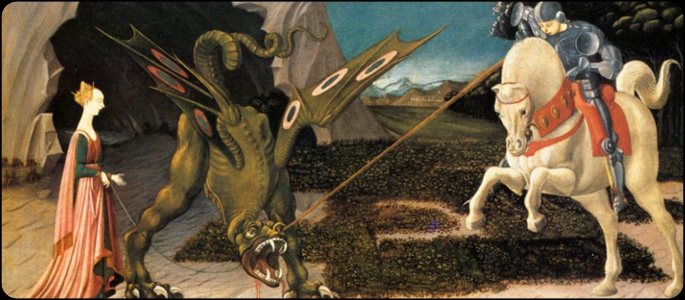
The 19th century saw the release of the highly influential fairy tale collection, Grimms’ Fairy Tales, which included the tale ‘The Two Brothers‘, where a seven-headed dragon demands maidens.
The 20th century started with a bang, with E. Nesbit’s 1901 release ‘The Book of Dragons‘ (which can legally be read here), a view of how dragons can shape the fates of princes, queens and children in a compilation of short stories. In 1933, The Chronicles of Narnia author C.S. Lewis released The Pilgrim’s Regress, which included an incredibly greedy, cannibalistic dragon.
1937’s The Hobbit (which is currently being adapted into a film), introduced readers to the world of Middle Earth, Tolkien’s fantasy universe that also includes The Lord of The Rings series and much of The Silmarillion. In The Hobbit, the main antagonist is the gold and jewel-hungry Smaug, a European style dragon who knew every item within his hoard. Tolkien also featured dragons in the whimsical and light-hearted Farmer Giles of Ham.
As the fantasy genre grew in popularity, so did the number of dragon-featuring literature, including notable books like Ursula K. Le Guin’s World of Earthsea, Terry Pratchett’s Discworld and George R. R. Martin’s A Song of Ice and Fire series, the latter of which is currently being adapted into the Game of Thrones TV series. The insanely popular fantasy world of Harry Potter also included European-style dragons.
In film, dragons have also been a popular enemy in fantasy stories, with them generally set in medieval Britain. 1981’s Dragonslayer, was a classic sword and sorcerer film where a typical European dragon lays a town to waste. Reign of Fire was also dark and gritty, showing what would happen if dragons awoke in the present day. A lot of films, however, have been far lighter in tone, with films like Dragonheart being more kid-friendly. Animated movies like Shrek, Shrek 2 and How to Train Your Dragon, also featured less malevolent dragons.
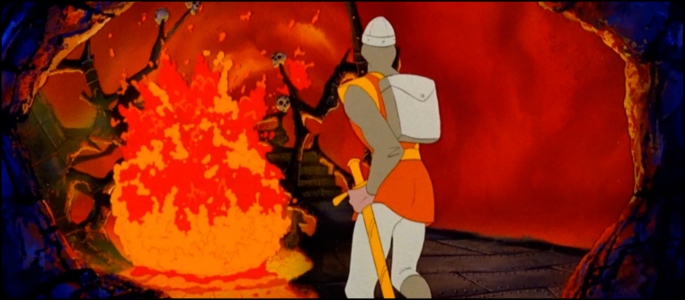
In games, dragons were a common choice for classic dungeon crawlers, with most of them taking inspiration from Tolkien and the board game Dungeons & Dragons. 1979’s Atari 2600 Adventure, which is considered to be the first action-adventure game included dragons, although its creator, Warren Robinett, admitted that the dragons looked like ducks. 1983’s comedic Dragon’s Lair was also a notable release, and seen as the most influential game of 1983. The game is currently one of only three video games on permanent display at the Smithsonian (as well as Pong and Pac-Man)
Dragon’s Lair: The fantasy adventure where you become a valiant knight, on a quest to rescue the fair princess from the clutches of an evil dragon. You control the actions of a daring adventurer, finding his way through the castle of a dark wizard, who has enchanted it with treacherous monsters and obstacles. In the mysterious caverns below the castle, your odyssey continues against the awesome forces that oppose your efforts to reach the Dragon’s Lair. Lead on, adventurer. Your quest awaits!
As 3D graphics became a reality, so did 3D dragons. Panzer Dragoon featured futuristic armored dragons that could be ridden, and was one of the few games available for the Sega Saturn’s launch. Bestselling Tomb Raider II followed Lara Croft as she tried to get her hands on the Dagger of Xian, which would turn the bearer into a dragon – if they stabbed themselves in the heart. Insanely popular Monster Hunter also features numerous dragons, and Final Fantasy featured the dragon Bahamut. Originally developed by Insomniac Games, Spyro gave players the ability to actually play as the dragon, although you play as a small, purple dragon rather than a huge, ferocious beast.
This generation has also seen its fair share of dragon games. Much hyped PS3 exclusive Lair, which allowed you to ride dragons, sadly suffered terribly mainly due to its heavy reliance on SixAxis motion control. BioWare’s dark fantasy RPG series Dragon Age also featured classic winged fire breathing monsters.
But the biggest dragon-themed game of this generation is, unquestionably, The Elder Scrolls V: Skyrim. Released this past November, the epic action role playing game sold more than 3.5 million copies within the first 48 hours of release. A whole team was set aside and dedicated to working only on dragons, and their interactions with the world. Dragons are randomly generated (other than the plot based ones) and so can attack you and towns at any time, although some aren’t hostile. As Dragonborn, you can learn Dragon shouts of up to three words by absorbing the souls of slain Dragons and by visiting Word-Walls in dungeons. Due to its sheer size and scale, it’s unlikely we’ll see a game with dragons that rivals for Skyrim for some time, but Bethesda is sure to release DLC over the coming years.
What is your favorite dragon book, film or game? Share your thoughts in the comments below.
If you enjoyed this editorial, be sure to check out our other features, interviews and reviews.
